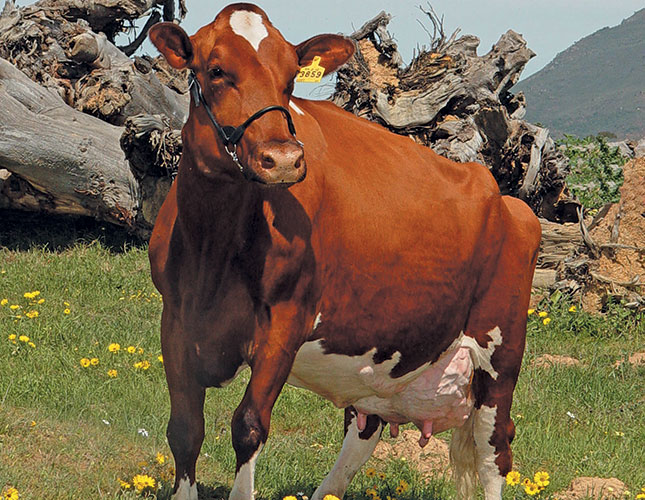
Photo: Wayne Southwood
With practice, it is relatively easy to identify a healthy dairy cow. This will then enable you to tell when something is not right and take immediate action.
Here are the signs to look for in a healthy animal:
General appearance
It is alert and aware of its surroundings. It stands squarely on all four feet and holds its head high, watching what’s happening around it.
Movement
It walks easily and steadily, with all four feet bearing its weight. Its steps are regular; irregular movement suggests pain in its feet or legs. A healthy animal that is lying down will get up quickly.
Eyes
These should be bright and alert, with no discharge at the corners.
Ears
These should be upright, move to pick up any sound, and flick rapidly to get rid of flies.
Nose and muzzle
The nose of a healthy cow is clean, with no discharge, and the muzzle is moist. The animal should lick its nose frequently.
Mouth
There should be no dribbling saliva. If chewing is slow or incomplete, there could be a problem with the teeth.
Hair/coat
The hair coat of a healthy animal is smooth and shiny.
Breathing
This should be smooth and regular at rest. If the animal is in the shade, it’s difficult to notice the chest moving as it breathes. Activity and hot weather will increase the breathing rate.
Pulse
A cow’s pulse can be felt on the tail a short distance below the base. Measure it by holding the tail lightly with your thumb and forefinger. The normal rate is 40 to 80 beats/minute in the adult animal, and somewhat higher in a young animal.
Dung/urine
The dung pat of a healthy animal is soft. Watery dung (diarrhoea) and difficulty in defecating (constipation) are signs of ill health. The urine should be clear and the animal will urinate with no sign of pain or difficulty.
Appetite and rumination
The cow should eat and drink normally. If feed is available, it will have a full belly. When a herd of healthy cows are at rest, most of them are ruminating. A poor appetite is an obvious sign of ill health.
Milk
There should be no swelling of the udder and no sign of pain when it’s touched. The teats must not be injured. In the lactating cow, a sudden decrease in milk production could indicate a health problem. Blood in the milk points to an udder infection.
Body temperature
An abnormally high body temperature is a sign of infection (although environmental factors must be taken into consideration).
Finally, remember that a healthy animal tends to behave calmly, so any behaviour not usually seen may be a problem. For example, if a cow keeps looking at its flanks or kicks at its belly, there could be pain in the stomach area.
Source: The Milk SA Guide to Dairy Farming in South Africa (2013). Milk SA











